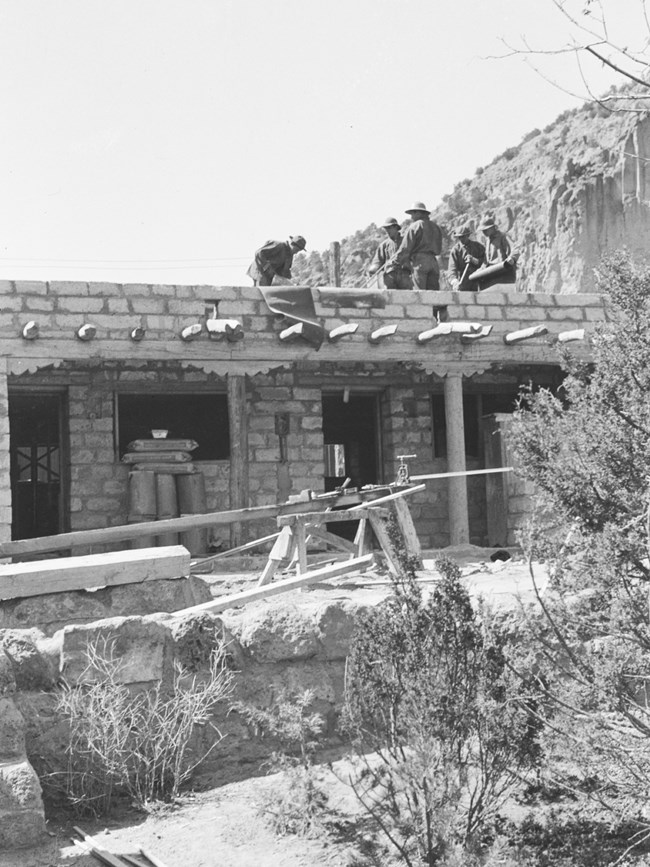
Natt N. Dodge/NPS Photo Bandelier was established as a National Monument in 1916, but until the mid-1930s the only facility in Frijoles Canyon was a lodge built in 1909 by Judge A.J. Abbott. Even by 1925 when George and Evelyn Frey acquired the lease to run the lodge, the only way for visitors to access the canyon bottom and the lodge was on foot. Much of the Freys' food came from their garden and livestock, but everything else – visitors, archaeologists, supplies, and the Freys themselves whenever they had to get groceries or mail – had to come down this trail (now known as the Frey Trail). 
NPS Photo Older, skilled workers, known as LEMs (Local Experienced Men), taught the enrollees marketable skills, including carpentry, tinwork, furniture making, carving, and masonry. As soon as a CCC camp was approved for Bandelier, "Boss" Pinkley began putting together plans for a road into the canyon and facilities for visitors. The National Park Service, looking to harmonize park structures with the environmental and the local cultures, chose a popular regional style known as Pueblo Revival. Lyle Bennett, park service architect, had designed several other park service and CCC buildings in the Southwest and was well versed in this style. The road was the first project, and it opened as a truck trail in 1933. During the next eight years the enrollees built 31 stone buildings for visitor facilities, park service residences, offices, the fire tower and entrance station, along with the hand-carved wood furniture and pierced-tin light fixtures to furnish them. Their world also included building trails, helping archaeologists stabilize the Ancestral Pueblo sites, and widening and completing the road. In late 1941, the work was essentially complete and the camp was moved out of Frijoles Canyon. In December of that year, the United States entered World War II, and across the country CCC enrollees enlisted in the Armed Services, thus ending the CCC era. Today, Bandelier National Monument has one of the largest collections of CCC buildings in the United States. They were done in a time of national economic emergency, by young men learning skills under the supervision of local experienced craftsmen. There was little funding for supplies, necessitating the use of local materials, but an almost unlimited supply of labor, resulting in beautiful, painstaking handwork that would be almost impossible to duplicate today. They are a true tribute to the CCC program and its participants. 
NPS Photo |
Last updated: February 29, 2024
